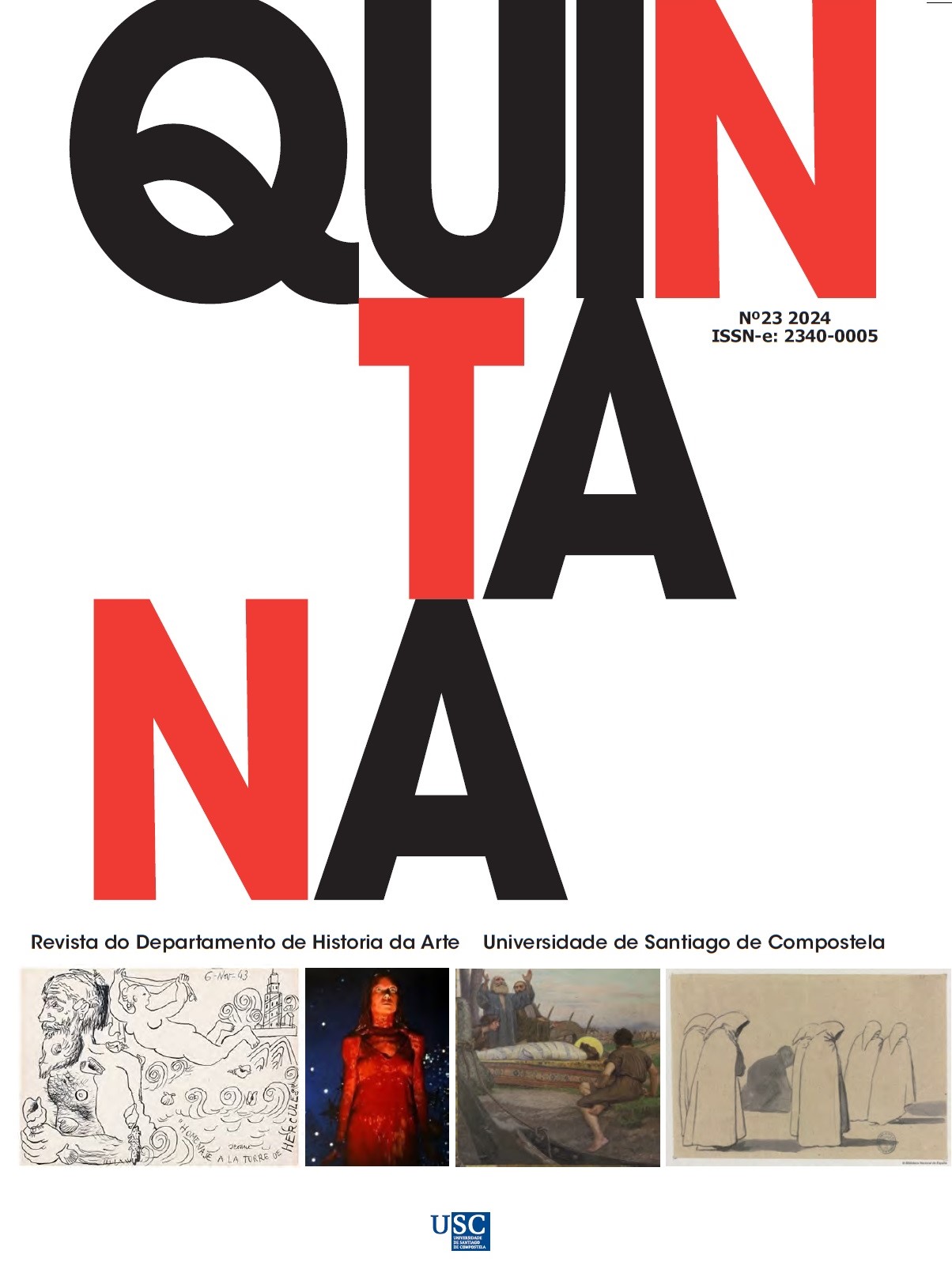ARTE EN LA HISTORIA: RESISTIENDO LA INVISIBILIDAD SOCIAL
Contenido principal del artículo
Resumen
Busco comprender la habilidad de mirar, la base sólida de la historia del arte, pero específicamente el “cómo hacerlo” que damos por sentado con demasiada facilidad. Que el mirar lleva a ver no es algo obvio. En este artículo desarrollo una metáfora teórica que es social, ética y visual, y que puede ayudar a la historia del arte en su misión. La metáfora surgió de casualidad: una vez, en la calle, oí a un hombre de origen extranjero murmurar para sí: “ni siquiera me miran”. Fue entonces cuando apareció la semilla del cortometraje contenido en este artículo y surgió la metáfora teórica de la visibilización. La consecuencia de este “no mirar” y de la ausencia de compromiso con él a través del habla, es que él no pertenece, no es parte del grupo dentro del cual existe físicamente: la multitud.
Palabras clave:
Detalles del artículo
Referencias
Adorno, Theodor W. 2003. Can One Live After Auschwitz? A Philosophical Reader, [1974] edited by Rolf Tiedemann and translated by Rodney Livingstone et al. Stanford: Stanford University Press.
Bal, Mieke. 1991. Reading “Rembrandt”: Beyond the Word-Image Opposition. Cambridge, UK, and New York: Cambridge University Press.
Bal, Mieke. 1992. “Narratology and the Rhetoric of Trashing”. Comparative Literature 44, no. 3 (Summer): 293-306. https://doi.org/10.2307/1770859
Bal, Mieke. 1999. Quoting Caravaggio: Contemporary Art, Preposterous History. Chicago: University of Chicago Press.
Bal, Mieke. 2002. Travelling Concepts in the Humanities: as Rough Guide. Toronto: University of Toronto Press. [Conceptos viajeros en las humanidades: una guía de viaje; traducción, Yaiza Hernández Velázquez. Murcia: CENDEAC, 2009].
Bal, Mieke. 2008. Loving Yusuf: Conceptual Travels from Present to Past. Chicago: University of Chicago Press. https://doi.org/10.7208/chicago/9780226035888.001.0001
Bal, Mieke. 2016a. (ed.) “Art Moves: Performativity in Time, Space and Form”. Espacio, Tiempo y Forma. Serie VII. Historia del Arte (dossier). https://doi.org/10.5944/etfvii.4.2016
Bal, Mieke. 2016b. In Media Res: Inside Nalini Malani's Shadow Plays. Ostfildern, Germany: Hatje Cantz.
Bal, Mieke. 2020a. Exhibicision-ism: Temporal Togetherness. The Contemporary Condition. Berlin: Sternberg Press.
Bal Mieke. 2020b. “Movement, Precarity, Affect”. In Deleuze, Guattari and the Art of Multiplicity, edited by Radek Przedpełski and S. E. Wilmer, 83-96. Edinburgh: Edinburgh University Press. https://doi.org/10.1515/9781474457675-009
Bal, Mieke. 2020c. “Thinking in Film”. In Thinking in the World: A Reader, eds. Jill Bennett and Mary Zournazi, 173-20. London: Bloomsbury Academic.
Bal, Mieke. 2022. “Inter-ships with Nalini Malani: The Foreshortening of Time”. In Nalini Malani: My Reality is Different, 86-99. London: National Gallery Global / Yale University Press.
Benjamin, Walter. 1968. “The Task of the Translator”. In Illuminations, edited and with an Introduction by Hannah Arendt (translated by Harry Zohn). New York: Schocken.
Derrida, Jacques. 1984. Margins of Philosophy. Translated by Alan Bass. Chicago: University of Chicago Press.
Ionescu, Vlad. 2018. “The Figure in Time: on the Temporality of the Figural”. In Working Through the Figure: Theory, Practice, Method, edited by Laura Marin and Anca Diaconu, 11-61. Bucharest: Bucharest University Press.
Lee, Kyoo. 2012. Reading Descartes Otherwise: Blind, Mad, Dreamy, and Bad. New York: Fordham University Press. https://doi.org/10.5422/fordham/9780823244843.001.0001
Mitchell, W. J. T. 2021. “Present Tense: An Iconology of the Epoch”. Critical Inquiry 47 (Winter): 370-406. https://doi.org/10.1086/712120
Peeren, Esther. 2014. The Spectral Metaphor: Living Ghosts and the Agency of Invisibility. Basingstoke, UK: Palgrave MacMillan.
Rodowick, David N. 2001. Reading the Figural, or, Philosophy after the New Media. Durham and London: Duke University Press. https://doi.org/10.1215/9780822380764
Saloul, Ihab. 2018. Catastrophe and Exile in the Modern Palestinian Imagination. Telling Memories [2012]. New York and London: Palgrave Macmillan.
Saloul, Ihab. 2020. “Postmemory and Oral History: Inter-generational Memory and Transnational Identity in Exile”. In Visioning Israel-Palestine: Encounters at the Cultural Boundaries of Conflict, edited by Gil Pasternak, 244-263. London: Bloomsbury. https://doi.org/10.5040/9781501364655.ch-009
Spivak, Gayatri Chakravorty. 1999. A Critique of Postcolonial Reason: Toward a History of the Vanishing Present. Cambridge: Harvard University Press. https://doi.org/10.2307/j.ctvjsf541







